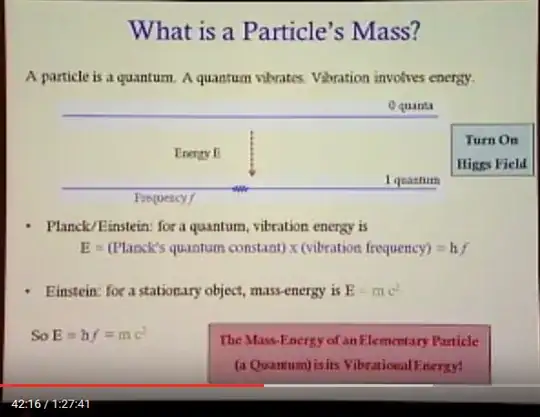There is the statement in the video, "particles vibrate", and vibrations lead to the concept of frequency.
The confusion comes because in fist quantization, the solutions of the Schroedinger and Dirac equations, the wavefunctions have a sinusoidal dependence, which lead to a probability density distribution for the particles, and the de Broglie wavelength
$$\lambda= h/p$$
is consistent with these solutions. For a particle approaching zero momentum this gives a frequency approaching infinity , in contradiction with the statement which identifies a frequency to the rest mass of the particle.
In the video, a particle at rest is identified with a frequency $E=h\cdot \nu$ given by its mass energy equivalence.

These ( the de Broglie and the one discussed in the video) are two different frequencies , the difference being that the deBroglie is a probability wave spread in space, but Strassler is talking of the particle at rest being represented by a field at a specific $(x,y,z),$ excited by one quantum with a creation operator. It is the frequency at that specific point that is vibrating, it has nothing ( or little ) to do with the de Broglie wave frequency and probability.
At a given $(x,y,z)$ a particle is represented by a creation operator and in the harmonic oscillator model this is a valid representation.
The harmonic oscillator is a very useful model because symmetric potentials , which are real potentials between interacting particles, has as a first term in their expansion $x^2,$ which is the simple harmonic oscillator.
The ground state in this field theoretical approach is given by the solution of the free particle equation ( i.e. no potentials), and on this ground states the particle moves by consecutive creation and annihilation operators following its motion.
I would take all this video as an analogy, to give a feeling/intuition.
At least that is the way I understand the discussion you introduced me to.
